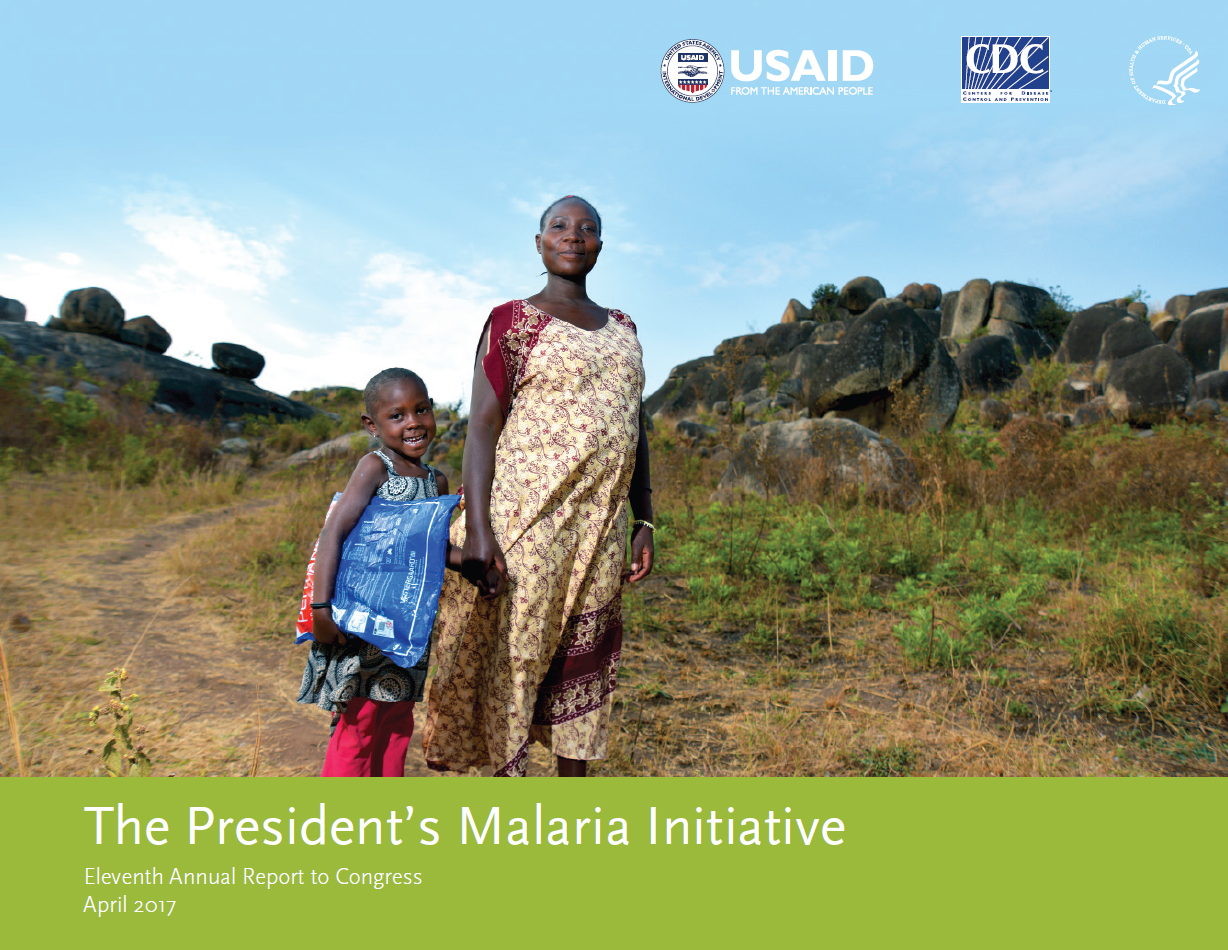MALARIA’S TOLL
Malaria remains a fact of life for billions of people living in tropical areas. Each year, malaria kills an estimated 429,000 people worldwide.1 In sub-Saharan Africa, infection with malaria parasites also makes young children more likely to die of pneumonia and diarrhea. Because malaria is one of the main reasons that children miss school and adults miss work, it is a disease that further hampers educational achievement, contributes to food insecurity, and entrenches poverty.
U.S.GOVERNMENT CONTRIBUTIONS TO HISTORIC PROGRESS AGAINST MALARIA
While malaria can be deadly, it is also a preventable and curable disease. Global progress in the fight against malaria since 2000 has been truly historic, and the U.S. Government has played a key role in this achievement. The World Health Organization (WHO) estimates that more than 6.8 million malaria deaths were averted worldwide between 2001 and 2015, primarily among children under five years of age in sub-Saharan Africa.2 The greatest progress occurred after 2005, when U.S. President’s Malaria Initiative (PMI) programs were operational and making contributions alongside partner countries and other donors to malaria control efforts. The Millennium Development Goal target of halting and reversing malaria incidence by 2015 was attained and surpassed. As a result of these unprecedented successes, the global malaria community has embraced a longterm goal of malaria eradication.3 PMI’s Strategy for 2015–2020 supports this global vision of a world without malaria.
The U.S. Government has shown unwavering commitment to ending the scourge of malaria, especially since the launch of PMI in 2005. The Initiative operates in 19 of the highest burden countries across sub-Saharan Africa, as well as 2 countries and a regional program in the Greater Mekong Subregion (GMS). In FY 2016, PMI reached more than 480 million people at risk of malaria across sub-Saharan Africa. The Initiative, led by the U.S. Agency for International Development (USAID) and implemented together with the U.S. Centers for Disease Control and Prevention (CDC), has contributed to substantial reductions in malaria deaths and illness in partner countries. According to the 2015 World Malaria Report, between 2000 and 2015, global malaria mortality has declined by an estimated 48 percent and malaria incidence by 37 percent.
Furthermore, across the 19 PMI focus countries in sub-Saharan Africa, between 2010 and 2015:
- Malaria mortality rates decreased by 29 percent with 10 PMI focus countries achieving20 percent to 40 percent reductions, and
- Malaria incidence decreased by 19 percent with9 PMI focus countries achieving 20 percent to40 percent reductions.
These reductions, which have been achieved on top of the recorded progress in PMI focus countries since the start of the Initiative, have contributed to the reported declines in all-cause child mortality. To date, 18 of the 19 PMI focus countries in Africa have data from paired nationwide surveys that were conducted since PMI activities began. All 18 countries have documented declines in all-cause mortality rates among children under fi ve (see Figure 1, page 6).4 The large-scale rollout of malaria prevention and treatment measures across sub-Saharan Africa during the past decade has been an important factor in these child survival improvements.








Comment
Make a general inquiry or suggest an improvement.